Climate-related risks can bring significant impact to HA’s capital. To cope with climate change, it is essential for HA to enhance the resilience and sustainability of its public housing developments. As more rainstorm and typhoon are expected in the future, the HA has developed a system to mitigate the impacts brought by these extreme weathers.
Developed since 2013, the Zero Irrigation System (ZIS) is a pioneering system that reuses rainwater for landscape irrigation. It conserves freshwater for irrigation and relieves the pressure in the urban sewer system at the same time. ZIS has been adopted in planters of appropriate location and size in all new public housing projects since 2016.
The ZIS applies the concept of “Resilient Landscape” through the combination of 3 sustainable systems:
Purpose
Collect and store rainwater for use
Purpose
Reduce or defer the volume of storm water runoff entering the urban sewer system
Purpose
Deliver storm water stored in water retention cells to the vegetation and to minimise topsoil evaporation through capillary action
The system collects, stores, and deliver the water by itself passively in a self-sustaining cycle.
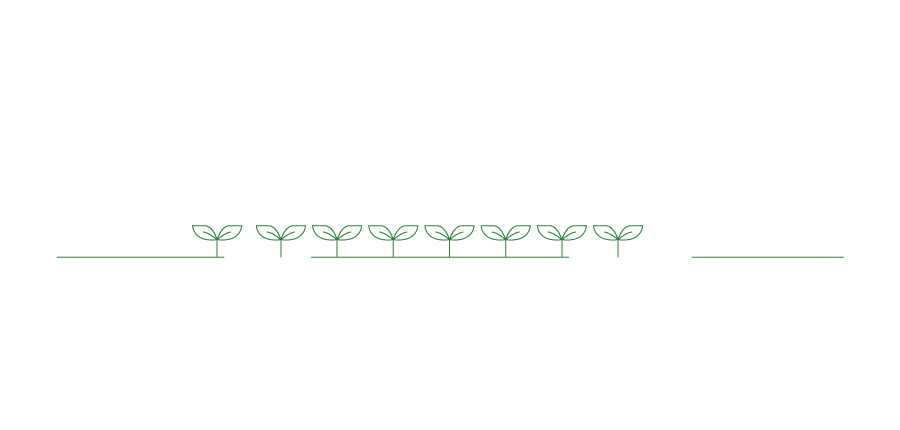

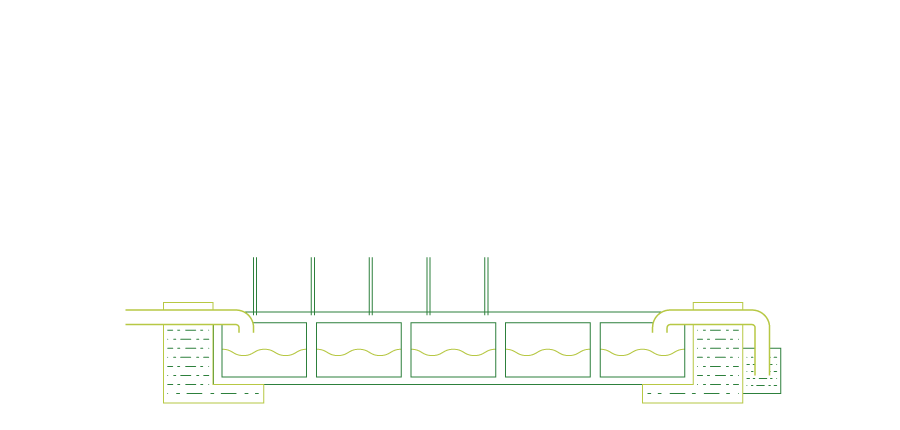



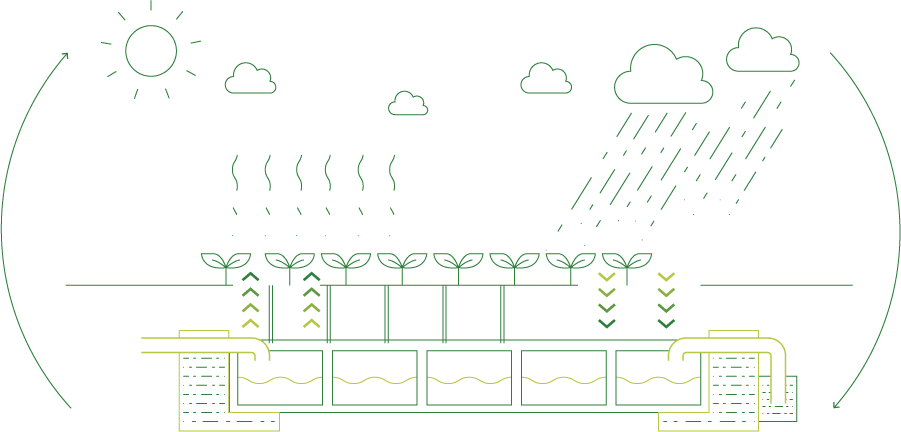
Since the ZIS was first developed in 2013, we have run several pilot projects in various estates. During the trial period, plants remained in good condition, no water logging nor unpleasant odour was observed, and only general horticultural maintenance was required occasionally. The system significantly increased water storage capacity of soil and minimized water runoff to drainage system during inclement weather.
In 2019, we installed the ZIS planters at the ground floor and podium floor at Yau Lai Estate Phase 7. Most of the time, rainwater is stored at water retention boxes and absorbed by the plants locally, satisfactory results were recorded.
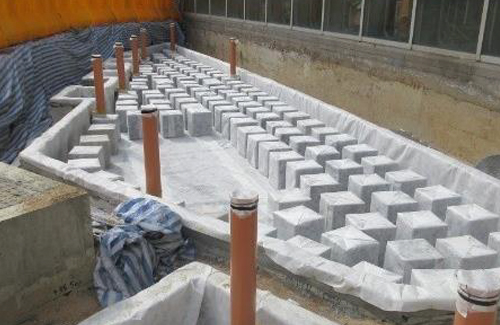
During Construction
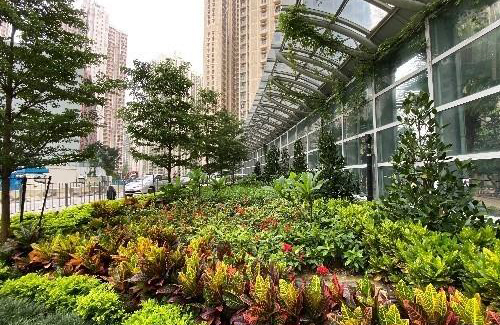
At ground floor
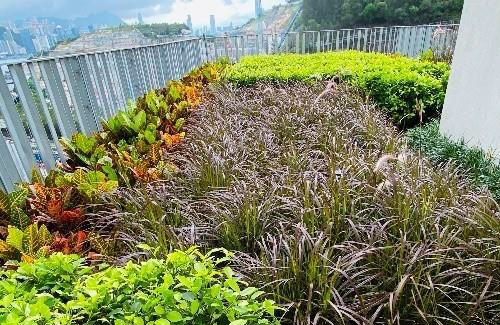
At podium floor
With the passive, non-mechanical design, the ZIS could harvest rainwater at a cheaper cost than the conventional system, it also de-centralised and mitigated the risk of flooding locally. Given the previous success, we are continuing our study on feasibility of planting trees with ZIS application on podium, as well as the pre-fabrication modular ZIS design to reduce loading requirements and construction time.
Modular ZIS – pre-fabrication is being explored since 2018 to reduce the construction time and loading requirements. Trial study was conducted at Cheung Sha Wan Wholesale Food Market project. In 2019, further trial of modular ZIS using recycled glass cullet from EPD as sustainable source to replace river sand was conducted at Wing Tai Road project.
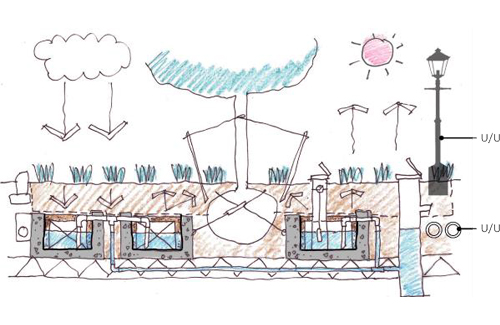
Design concept of modular ZIS
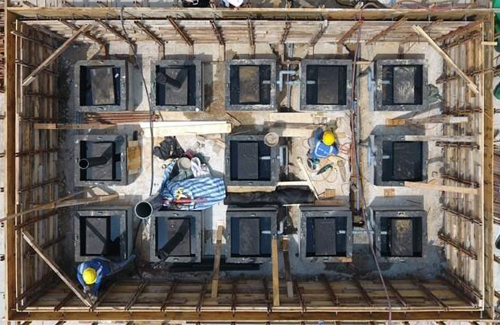
Trial on modular ZIS in Cheung Sha Wan Wholesale Food Market
In the long term, we target to widely apply the ZIS in public housing estates to restore natural hydrologic cycle in urban areas. We also take it as our on-going task to refine the system with more economical materials to achieve evermore cost-effective designs.